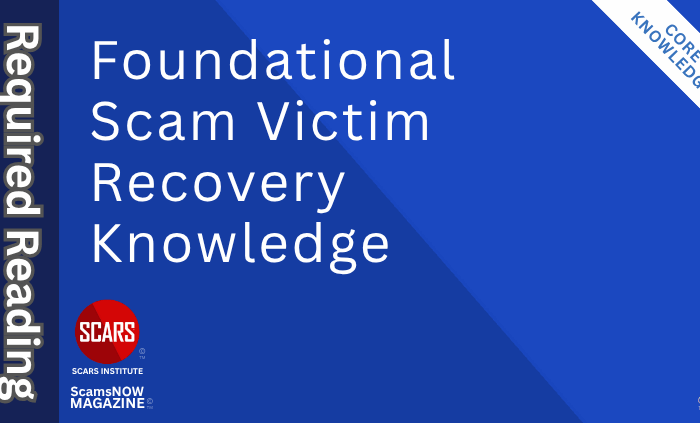
Ship of Theseus – A Reflection on Change
Ship of Theseus, Scam Recovery, and Your Evolving Changing Self
Primary Category: Scam Victim Recovery Philosophy
Authors:
• Tim McGuinness, Ph.D., DFin, MCPO, MAnth – Anthropologist, Scientist, Polymath, Director of the Society of Citizens Against Relationship Scams Inc.
Author Biographies Below
About This Article
You can use the Ship of Theseus as a clear lens to understand life after a relationship scam: piece by piece, you can replace habits, boundaries, and beliefs, and you can wonder whether you are still you; the answer is that continuity lives in your values, purpose, and choices, not in unchanging parts. You can grieve the earlier version of yourself while you rebuild confidence and safety. You can set a long horizon for healing, practice steady skills, report when ready, and keep what defines you while you retire what no longer serves you. You can create an eight-year reflection ritual to review what you will keep and what you will change, and you turn your experience into protection for yourself and others through careful sharing, boundaries, and small, repeatable steps that keep you moving toward what matters.
Note: This article is intended for informational purposes and does not replace professional medical advice. If you are experiencing distress, please consult a qualified mental health professional.

Ship of Theseus, Scam Recovery, and Your Evolving Changing Self
The Ship of Theseus is an ancient thought experiment about how much change makes something a completely new thing. The same applies to people too.
You carry a story about who you were before the scam and who you are now. You compare the two and feel the ache that rises when identity changes without your consent. You search for a way to make sense of loss, repair, and growth that does not erase what happened or trap you in it. The ancient thought experiment of the Ship of Theseus gives you a useful lens. You can examine how parts are replaced over time, how continuity persists or breaks, and how to meet yourself with accuracy and compassion during recovery.
The Ship of Theseus, Explained
Picture a sailing ship that sails year after year. Planks rot and get replaced, ropes wear and get swapped, masts crack and get renewed. After many seasons, none of the original parts remain. You ask whether it is still Theseus’s ship. You ask when the change crossed a line, or whether identity belongs to function, form, story, or matter. Philosophers use this riddle to test ideas about sameness over time and to ask what it means for something to persist through replacement.
You can translate the riddle into two practical questions. You ask what makes something the same through change, and you ask how much change you can accept before you decide that it is now something else. These questions matter for your recovery, because your sense of self will shift as you rebuild the pieces that harm disrupted. You can decide what you will keep as the thread of identity, whether it is values, memories, commitments, or purpose.
How This Applies to a Relationship Scam
There is a semi-urban legend that the human body swaps out all of its cells every 8 years. Additionally, we know that trauma takes 8 years to fully recover from. It would seem then that if nothing else, by the time a person recovers, they are a new person anyway. That every 8 or so years, you are physically a different person.
Of course, a scam does not just take money or time. It takes confidence in your judgment, trust in your perception, and comfort in your story about who you are. But most importantly, it takes your sense of safety.
You begin to repair your mind and body systems that broke under pressure. You replace the planks on your ship of self and daily life. You add supports to your emotional structure. Over months and years, you test new ways to relate, new filters for risk, and new lines for self-respect. You feel the Ship of Theseus question in your bones, because as parts change, you ask whether you are still you.
Why It Feels Like Everything Changed
You sense a before and after because betrayal reaches into memory, attention, and threat response. You become more alert to signs of danger, and your language narrows when stress rises. You notice how your social world shifts, because you speak differently to family and friends and you choose different spaces online. The sum of many small changes can feel like a complete replacement. You are still you, yet you are also different, and holding both truths takes practice.
Grief for the Pre-Scam Self
You grieve the version of yourself who trusted easily, who typed without second-guessing, who opened messages without a tight chest. You grieve the person who had not yet learned certain hard truths. Grief is not a sign that you are failing recovery. Grief is how you honor what mattered and how you make room for what comes next. Naming the grief allows you to carry it with skill rather than let it speak for you in silence.
You mourn innocence, time, and money. You mourn the spontaneous way you used to connect. You mourn the ease of believing that good intentions met you on the other side of the screen. You may even mourn an imagined relationship that felt real. These losses are real because your nervous system bonded to a story, and your life rearranged around it. When the story collapsed, the rearrangement did not simply reset.
Your Body’s Renewal, Without the Myth
You have heard that every cell in your body is replaced every seven or eight years. You can use the image as a metaphor, yet you also benefit from accurate science. Your body renews at different speeds in different tissues. Bone remodels across adulthood on a long cycle. Heart muscle cells renew slowly, with a small percentage replaced each year, which declines with age. Parts of your hippocampus, a memory-related region, continue to add new neurons in adulthood, although most neurons elsewhere are long-lived and are not fully replaced. This means you do not become a completely new body on a fixed schedule, yet you do live inside a system that constantly repairs, refreshes, and adapts.
Why This Nuance Matters
When you understand that change happens regardless of what happens in your life, you can release some of the pressure to force a total reset at a specific year mark. You can respect rhythms of change that unfold at different paces. Some parts of you will feel new sooner. Some will feel steady and old. Recovery works with both truths. You are renewing and enduring at the same time, which is a more hopeful and realistic picture of change.
The Timeline of Healing, Without a Single Clock
You may have heard that betrayal trauma takes a fixed number of years to heal. Research and clinical experience show wide variability, though the 8-year mark is well established. Symptoms can persist for years if support is limited, yet many people improve faster with consistent help, safety, and community. Fraud and interpersonal trauma can have lasting mental health impacts, although some of the duration depends on severity, resources, and context. But you can plan for a long arc while giving yourself permission to heal in your own time.
How to Use a Multi-Year Horizon Wisely
You can let a longer horizon reduce your urgency rather than fuel hopelessness. You can commit to steady practices that compound over months. You can track progress in small steps, not in an all-or-nothing finish line. You can allow for plateaus, returns, and renewed momentum. You can measure what you can influence today and allow the calendar to be a guide rather than a judge.
Identity Through Repair
You do not ever become yourself again by erasing the change. You become yourself again by deciding what thread you will carry through the repair process. You can choose your enduring values like honesty, service, or curiosity as your ship’s keel. You can choose commitments like protecting others from harm or telling the truth about scams where you live and work. You can choose the story you tell yourself, not the story the criminals wrote for you.
You can keep the parts of your identity that the scam could not take, such as your morals, your work ethic, your care for family, and your long-term goals. You can replace practices that did not protect you, and you can add practices that do. You can become a ship that sails with different parts and yet has the same mission or destination. You can grant yourself the authority to define your continuity and to retire what no longer serves you.
Your Eight-Year Reflection Practice
Even though total cellular replacement on an eight-year schedule is not accurate science, you can still use an eight-year reflection as a practical, philosophical ritual. Every eight years, and you have typically 10 of these cycles, you can ask how your values, relationships, skills, and habits have changed. You can ask what you will keep and what you will retire. You can treat your identity as an active project rather than a passive inheritance. You do not wait for life to change you by force; you can guide it as the Captain of your own ship.
You frame the past eight years as chapters. You can write three paragraphs about where you grew, three about what you learned the hard way, and three about what you want to become. You can map the next eight years with three commitments you can live by in daily actions. You can set a reminder to revisit your map each year so the ritual remains active rather than symbolic.
The Social Meaning of Your Change
Your recovery affects more than your inner life. Your community learns from your experience when you choose to share. Your police report adds data that helps others. Your voice in a support space reduces shame for people who arrive behind you. The ship you sail after repair pulls others out of rough water when they see your mast on their horizon. You become both a witness and a guide.
You do not owe details to strangers. You can choose where your story lives. You can place a short version in a community forum, or you can present a lesson at a workplace training, or you can mentor one person privately. Each act recovers meaning from harm and builds safer waters. You protect yourself while helping others by setting clear boundaries around what you share.
A Philosophy You Can Use Daily
The Ship of Theseus teaches you that sameness is not only material. Sameness can be functional, a pattern, or a purpose. You can lose planks and keep the on the voyage. You can replace ropes and lines and keep on your course. You can decide which anchors you will honor and which sails you will raise. You gain freedom when you separate identity from any single part and connect it to the course you set.
You can test identity based on values, not on outcomes. You can test the quality of your attention, not on the absence of pain. You can test whether you move toward what you care about, not whether the wind is perfect. You will find that these anchors of your identity remain stable even when circumstances change.
A Practical Guide to Live This Philosophy
- Step 1: Name Three Parts You Will Replace
You pick three practices that no longer serve you. You might choose unbounded late-night scrolling, answering unknown messages, or trusting new profiles without verification. You write replacement practices that you can sustain, such as time-boxed screen use, default non-response to unknown contacts, and a short verification checklist. - Step 2: Name Three Parts You Will Preserve
You pick qualities that define your core. You might choose kindness, diligence, and courage. You write one daily action for each so you see them in motion. You act kindly by checking on a friend. You act diligently by keeping a reporting log. You act courageously by speaking a short truth to someone safe. - Step 3: Set Captain’s Orders for Rough Weather
You create a one-page plan for days when anxiety spikes. You include a two-minute breathing pattern, two people you can text, one grounding object, and one safe script. You keep the plan printed or pinned where you can reach it in five seconds. You review it after each rough day and adjust what did not work. - Step 4: Run Port-of-Call Checks Monthly
You set a calendar reminder to review finances, privacy settings, and boundaries. You look for weak planks before they fail. You tighten lines where needed. You make adjustments without self-blame, and you log changes so you can see progress over time. - Step 5: Mark Your Wake
You track three small wins each week. You notice when a conversation went better, when a trigger passed faster, and when you enjoyed something simple without scanning for threat. You let evidence of progress accumulate so your story becomes visible to you. You read your notes when discouragement visits, so you remember how far you have come.
You do not need a fixed eight-year number to find meaning. You can commit to staying with recovery as long as needed. You can let the horizon be long so daily actions can be small. You can treat change as a series of voyages rather than a single crossing. You can aim for steadiness, not speed, and your steadiness becomes the strongest proof of the identity you possess.
You can connect actions to values that matter to you. You can design rewards that fit your progress, not someone else’s timetable. You can celebrate steady effort more than dramatic change. You can surround yourself with people who encourage patience and who understand that growth often looks quiet.
You can return to the Ship of Theseus thought experiment later and ask again whether you feel like the same person. You may answer yes because your values and purpose stayed constant. You may answer yes in a different way because your story carried you forward. You may answer that you are not the same and that this is good news, because you became a wiser and kinder captain. You can allow your answer to evolve as you evolve.
You can say that identity is a promise you keep, not a museum display you guard. You can say that loss marked you and that growth marked you more. You can say that the ship you sail now is worthy of the voyage ahead, even if most of it has been changed. You can affirm that honoring the past and choosing the future can happen in the same breath.
Making Peace With Versions of You
You can replace lines like “I have to become someone entirely new by year eight” with “I am steadily renewing, and some parts of me are designed to last.” You replace “I should be over this by now” with “Healing follows its own curve, and I am doing the work that moves me.” You allow truth to lighten your load rather than make it heavier.
You can love the self before the scam without trying to resurrect that version. You can love the self during repair without demanding perfection. You can love the self you are becoming without fear that love betrays the past. You do not need to pass a test of sameness. You can pass a test of integrity. You can steer with values and let the parts change as needed.
One Final Idea
You can write a brief letter from the future you to the current you. You can thank yourself for doing hard things. You can name one way you will protect people you care about from similar harm. You can sign with your values as your title, because those values steer your ship. You should keep the letter where you will see it on hard days so your future voice can steady your present hands.
Conclusion
You can use the idea of the Ship of Theseus to clarify your identity through the changes to come. You can see how small replacements add up, and how continuity can live in purpose and values rather than in unchanging parts of your emotional sea. You can grieve what you lost, and you can honor what you carry forward. You can repair and heal, you can preserve, and you can steer with intention. You can become a steady captain of a well-kept ship that continues its voyage with honesty and strength.
Glossary
- Acceptance — You face what happened without denial so you can direct energy toward repair. You do not have to approve of harm to acknowledge reality, and this stance steadies you for the work ahead.
- Agency — You act on what you can control today rather than waiting for perfect conditions. Small, repeatable choices rebuild confidence and shape the self you are becoming.
- Anchors (Identity Anchors) — You choose stable references such as values, purpose, and commitments that hold steady while parts of life change. These anchors help you say, “I am still me,” even as you replace practices that no longer serve you.
- Baseline Safety — You create everyday protections that lower stress and reduce risk, such as privacy settings, device hygiene, and cautious contact rules. A safer baseline quiets alarms so speaking and connection become easier.
- Boundary Setting — You state what is acceptable and what is not in conversations and relationships. Clear lines like “Please listen first” or “I am not sharing amounts” protect your voice and pace.
- Captain’s Orders — You prepare a one-page plan you can follow on hard days. It lists a brief script, two people to contact, and a grounding routine so you are not deciding under pressure.
- Cognitive Reframing — You examine a painful thought and replace it with a more accurate one. For example, “I was targeted by a criminal” is truer and safer than “I am to blame.”
- Continuity of Identity — You keep identity linked to values and purpose rather than to unchanging parts. This lets you update habits and still feel like yourself.
- Disclosure Plan — You decide what to share, to whom, and through which channel, before you speak. Planning reduces overwhelm and keeps disclosures aligned with your goals.
- Dual Awareness — You hold two truths at once: the harm happened, and you are safe right now. This stance calms your body enough to tell your story without reliving it.
- Eight-Year Reflection — You use an eight-year check-in as a practical ritual to review what you will keep and what you will change. You treat it as a tool for meaning, not a fixed law of biology.
- Emotional Granularity — You name emotions precisely instead of saying “I feel bad.” Labels like “ashamed,” “angry,” or “afraid” point to different actions that help.
- Exposure Ladder — You start with the easiest step toward speaking and slowly add harder steps. This gentle pace teaches your nervous system that sharing can be safe.
- Future Self Letter — You write a brief note from a wiser, calmer you to your current self. The message reminds you of progress, priorities, and the long view.
- Grief Work — You make room to mourn who you were before the scam and what was lost. Honest grief reduces the pull of nostalgia and frees energy for growth.
- Grounding — You bring attention to the present with simple actions like slow breaths, naming five things you see, or feeling your feet on the floor. A grounded body supports a steady voice.
- Hypervigilance — You notice constant scanning for threat that leaves you exhausted. You lower it with predictable routines, limited exposure to triggers, and planned breaks.
- Identity Thread — You define the through-line you will carry forward, such as integrity or service. This thread guides choices when the path feels uncertain.
- Imagined Relationship — You recognize that emotional bonds can form with a false persona. Naming this reduces shame and clarifies why grief is real.
- Inner Critic — You notice harsh self-talk that blames and belittles you. You answer it with accurate responsibility statements and kind limits.
- Journaling Protocol — You capture timelines, feelings, and wins in short, regular entries. Notes become evidence of progress and a resource for reporting.
- Locus of Control — You sort what is inside your influence from what is not. You act on the first list and let the second one be, which reduces helplessness.
- Mindful Attention — You observe thoughts and sensations without judgment, then choose your next step. This pause creates space between feeling and action.
- Myth of Total Replacement — You set aside the popular claim that every cell is replaced in a single cycle. You accept that the body renews unevenly and still use change as a healthy metaphor.
- Narrative Repair — You rebuild the story of what happened with clear facts and fair meaning. A coherent narrative reduces shame and supports decisions.
- Nonlinear Healing — You expect ups and downs instead of a straight line. Knowing this prevents discouragement when progress pauses.
- Prefrontal Cortex — You rely on this planning and language system to organize steps and speak calmly. It works best when alarms are lower, which is why grounding comes first.
- Recontact Risk — You understand that offenders may try again. You reduce risk by blocking, reporting, and warning platforms and institutions.
- Reticence — You feel a pull toward silence after betrayal because disclosure once felt dangerous. You treat that pull as a safety signal and use planned, small disclosures to move forward.
- Ship of Theseus — You use this thought experiment to see how identity can persist through many replacements. You decide that continuity lives in function and purpose as much as in parts.
- Somatic Awareness — You track body signals like tight shoulders, shallow breath, or a clenched jaw. Early signals tell you to ground before you speak.
- Support Circle — You build a small team of trusted people and services. Shared load speeds recovery and reduces isolation.
- Threat Response — You notice fight, flight, or freeze when reminders appear. Naming the response and using your orders sheet helps you regain choice.
- Timeline (Factual) — You create a dated record of messages, payments, and events. A clean timeline strengthens reports and clarifies memory.
- Validation — You confirm that your feelings make sense in light of what happened. Self-validation and supportive listeners both reduce shame.
- Verification Checklist — You use a short list to test new contacts or offers: reverse-image search, official channels, no rush, and independent confirmation. Checklists protect you when emotions run high.
Author Biographies
-/ 30 /-
What do you think about this?
Please share your thoughts in a comment below!
TABLE OF CONTENTS
- Ship of Theseus, Scam Recovery, and Your Evolving Changing Self
- Ship of Theseus, Scam Recovery, and Your Evolving Changing Self
- The Ship of Theseus, Explained
- How This Applies to a Relationship Scam
- Why It Feels Like Everything Changed
- Grief for the Pre-Scam Self
- Your Body’s Renewal, Without the Myth
- Why This Nuance Matters
- The Timeline of Healing, Without a Single Clock
- How to Use a Multi-Year Horizon Wisely
- Identity Through Repair
- Your Eight-Year Reflection Practice
- The Social Meaning of Your Change
- A Philosophy You Can Use Daily
- A Practical Guide to Live This Philosophy
- Making Peace With Versions of You
- One Final Idea
- Conclusion
- Glossary
CATEGORIES
![NavyLogo@4x-81[1] Ship of Theseus - A Reflection on Change - 2025](https://scamsnow.com/wp-content/uploads/2025/04/NavyLogo@4x-811.png)
ARTICLE META
Important Information for New Scam Victims
- Please visit www.ScamVictimsSupport.org – a SCARS Website for New Scam Victims & Sextortion Victims.
- SCARS Institute now offers its free, safe, and private Scam Survivor’s Support Community at www.SCARScommunity.org – this is not on a social media platform, it is our own safe & secure platform created by the SCARS Institute especially for scam victims & survivors.
- SCARS Institute now offers a free recovery learning program at www.SCARSeducation.org.
- Please visit www.ScamPsychology.org – to more fully understand the psychological concepts involved in scams and scam victim recovery.
If you are looking for local trauma counselors, please visit counseling.AgainstScams.org
If you need to speak with someone now, you can dial 988 or find phone numbers for crisis hotlines all around the world here: www.opencounseling.com/suicide-hotlines
Statement About Victim Blaming
Some of our articles discuss various aspects of victims. This is both about better understanding victims (the science of victimology) and their behaviors and psychology. This helps us to educate victims/survivors about why these crimes happened and not to blame themselves, better develop recovery programs, and help victims avoid scams in the future. At times, this may sound like blaming the victim, but it does not blame scam victims; we are simply explaining the hows and whys of the experience victims have.
These articles, about the Psychology of Scams or Victim Psychology – meaning that all humans have psychological or cognitive characteristics in common that can either be exploited or work against us – help us all to understand the unique challenges victims face before, during, and after scams, fraud, or cybercrimes. These sometimes talk about some of the vulnerabilities the scammers exploit. Victims rarely have control of them or are even aware of them, until something like a scam happens, and then they can learn how their mind works and how to overcome these mechanisms.
Articles like these help victims and others understand these processes and how to help prevent them from being exploited again or to help them recover more easily by understanding their post-scam behaviors. Learn more about the Psychology of Scams at www.ScamPsychology.org
SCARS INSTITUTE RESOURCES:
If You Have Been Victimized By A Scam Or Cybercrime
♦ If you are a victim of scams, go to www.ScamVictimsSupport.org for real knowledge and help
♦ SCARS Institute now offers its free, safe, and private Scam Survivor’s Support Community at www.SCARScommunity.org/register – this is not on a social media platform, it is our own safe & secure platform created by the SCARS Institute especially for scam victims & survivors.
♦ Enroll in SCARS Scam Survivor’s School now at www.SCARSeducation.org
♦ To report criminals, visit https://reporting.AgainstScams.org – we will NEVER give your data to money recovery companies like some do!
♦ Follow us and find our podcasts, webinars, and helpful videos on YouTube: https://www.youtube.com/@RomancescamsNowcom
♦ Learn about the Psychology of Scams at www.ScamPsychology.org
♦ Dig deeper into the reality of scams, fraud, and cybercrime at www.ScamsNOW.com and www.RomanceScamsNOW.com
♦ Scam Survivor’s Stories: www.ScamSurvivorStories.org
♦ For Scam Victim Advocates visit www.ScamVictimsAdvocates.org
♦ See more scammer photos on www.ScammerPhotos.com
You can also find the SCARS Institute’s knowledge and information on Facebook, Instagram, X, LinkedIn, and TruthSocial
Psychology Disclaimer:
All articles about psychology and the human brain on this website are for information & education only
The information provided in this and other SCARS articles are intended for educational and self-help purposes only and should not be construed as a substitute for professional therapy or counseling.
Note about Mindfulness: Mindfulness practices have the potential to create psychological distress for some individuals. Please consult a mental health professional or experienced meditation instructor for guidance should you encounter difficulties.
While any self-help techniques outlined herein may be beneficial for scam victims seeking to recover from their experience and move towards recovery, it is important to consult with a qualified mental health professional before initiating any course of action. Each individual’s experience and needs are unique, and what works for one person may not be suitable for another.
Additionally, any approach may not be appropriate for individuals with certain pre-existing mental health conditions or trauma histories. It is advisable to seek guidance from a licensed therapist or counselor who can provide personalized support, guidance, and treatment tailored to your specific needs.
If you are experiencing significant distress or emotional difficulties related to a scam or other traumatic event, please consult your doctor or mental health provider for appropriate care and support.
Also read our SCARS Institute Statement about Professional Care for Scam Victims – click here
If you are in crisis, feeling desperate, or in despair, please call 988 or your local crisis hotline – international numbers here.
More ScamsNOW.com Articles
A Question of Trust
At the SCARS Institute, we invite you to do your own research on the topics we speak about and publish. Our team investigates the subject being discussed, especially when it comes to understanding the scam victims-survivors’ experience. You can do Google searches, but in many cases, you will have to wade through scientific papers and studies. However, remember that biases and perspectives matter and influence the outcome. Regardless, we encourage you to explore these topics as thoroughly as you can for your own awareness.
























![scars-institute[1] Ship of Theseus - A Reflection on Change - 2025](https://scamsnow.com/wp-content/uploads/2025/04/scars-institute1.png)
![niprc1.png1_-150×1501-1[1] Ship of Theseus - A Reflection on Change - 2025](https://scamsnow.com/wp-content/uploads/2025/04/niprc1.png1_-150x1501-11.webp)
